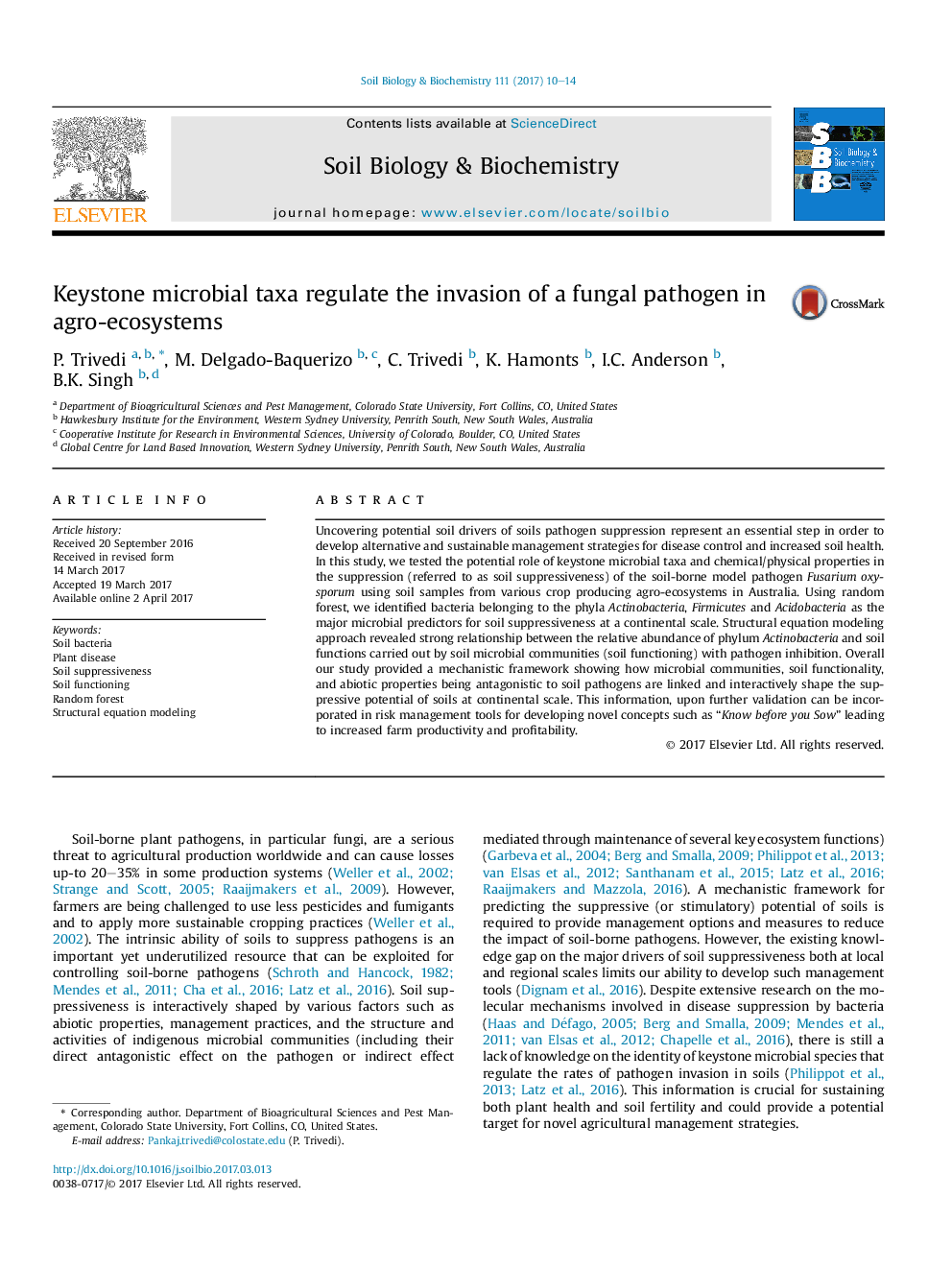| Article ID | Journal | Published Year | Pages | File Type |
|---|---|---|---|---|
| 5516280 | Soil Biology and Biochemistry | 2017 | 5 Pages |
â¢Disease suppression has a role in sustainable agriculture production.â¢Abundance of Actinobacteria can predict soil suppressiveness at a continental scale.â¢Integrating suppressive microbiome may help in engineering disease suppressive soils.
Uncovering potential soil drivers of soils pathogen suppression represent an essential step in order to develop alternative and sustainable management strategies for disease control and increased soil health. In this study, we tested the potential role of keystone microbial taxa and chemical/physical properties in the suppression (referred to as soil suppressiveness) of the soil-borne model pathogen Fusarium oxysporum using soil samples from various crop producing agro-ecosystems in Australia. Using random forest, we identified bacteria belonging to the phyla Actinobacteria, Firmicutes and Acidobacteria as the major microbial predictors for soil suppressiveness at a continental scale. Structural equation modeling approach revealed strong relationship between the relative abundance of phylum Actinobacteria and soil functions carried out by soil microbial communities (soil functioning) with pathogen inhibition. Overall our study provided a mechanistic framework showing how microbial communities, soil functionality, and abiotic properties being antagonistic to soil pathogens are linked and interactively shape the suppressive potential of soils at continental scale. This information, upon further validation can be incorporated in risk management tools for developing novel concepts such as “Know before you Sow” leading to increased farm productivity and profitability.
